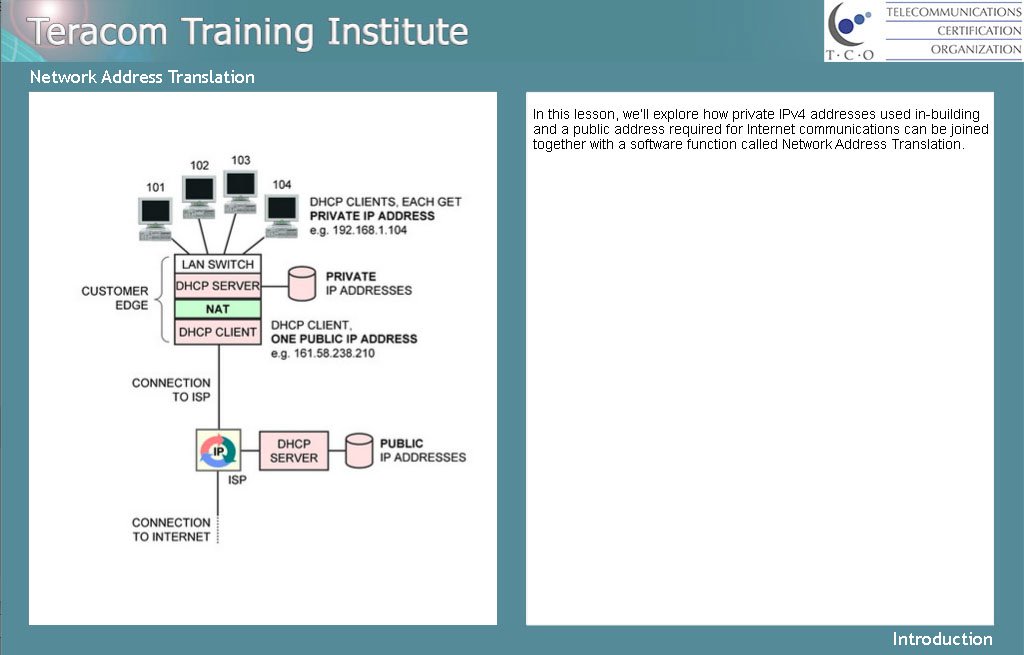Free Lesson!
Course 2213 – IP Addresses, Packets and Routers
Lesson 9: Network Address Translation (NAT)

This lesson explains the standard practice of assigning private IP addresses to machines inside the building, and getting a single public IP address from the ISP providing the Internet access. Everyone in the building shares the single public IP address via Network Address Translation. This lesson explains how NAT works.
This free online network training course lesson is in both the CTNS Certification Package and the CTA Certification Package.
Click here to watch for free now!
Course 2213 IP Networks, Routers and Addresses
IP Addresses • Packets • Networks • Routers • Static and Dynamic Addresses • DHCP • Public and Private Addresses • NAT • IPv6
IP Networks, Routers and Addresses is a comprehensive course on IP networking fundamentals: IP packets, IP addressing and IP routers.
We’ll see how routers implement the network with packet-switching, that is, relaying packets from one circuit to another, and how routers are a point of control for network security. We’ll introduce the term Customer Edge (CE), and understand the basic structure and content of a routing table.
Then we’ll cover the many aspects of IP addressing: IPv4 address classes, dotted decimal, static vs. dynamic addresses, DHCP, public vs. private addresses, Network Address Translation, and finish with an overview of IPv6.
Course Lessons
1. Introduction
2. Review: Channelized Time-Division Multiplexing (TDM)
3. Statistical Time-Division Multiplexing: Bandwidth-on-Demand
4. Network: Bandwidth on Demand + Routing
5. Routers
6. IPv4 Addresses
7. DHCP
8. Public and Private IPv4 Addresses
9. Network Address Translation
10. IPv6 Overview
11. IPv6 Address Allocations and Assignment
Based on Teracom’s famous Course 101, tuned and refined over the course of 20 years of instructor-led training, we’ll cut through the jargon to clearly explain IP and routers, packets and addresses, the underlying ideas, and how it all works together… in plain English.
